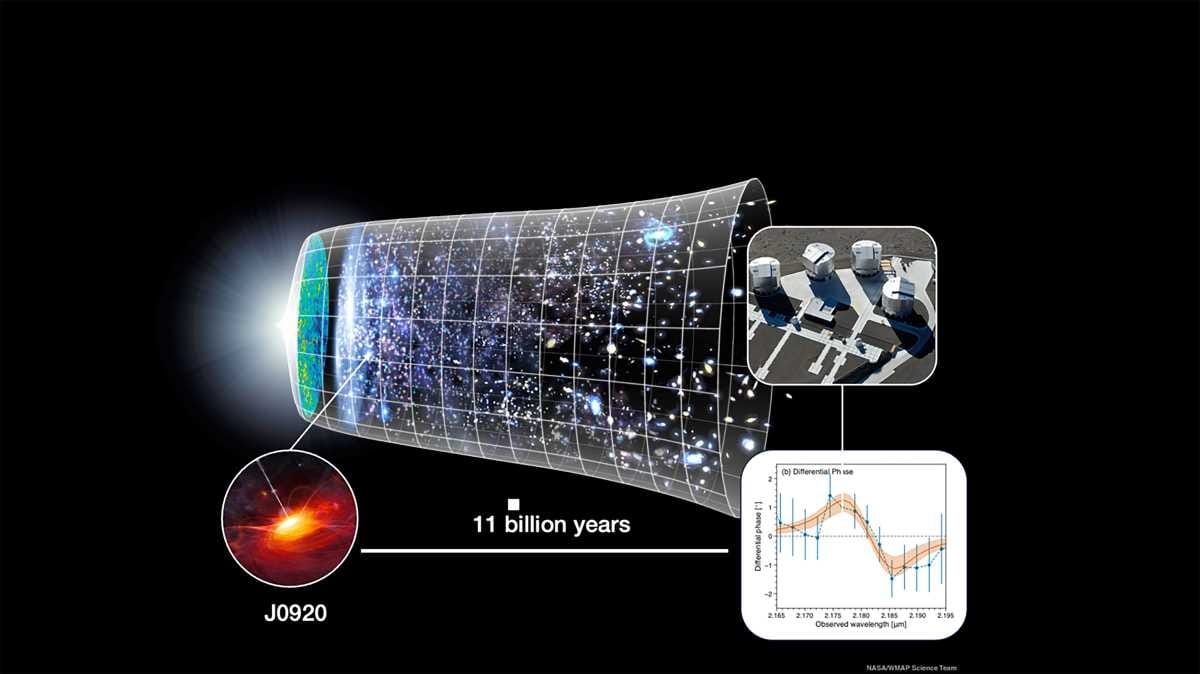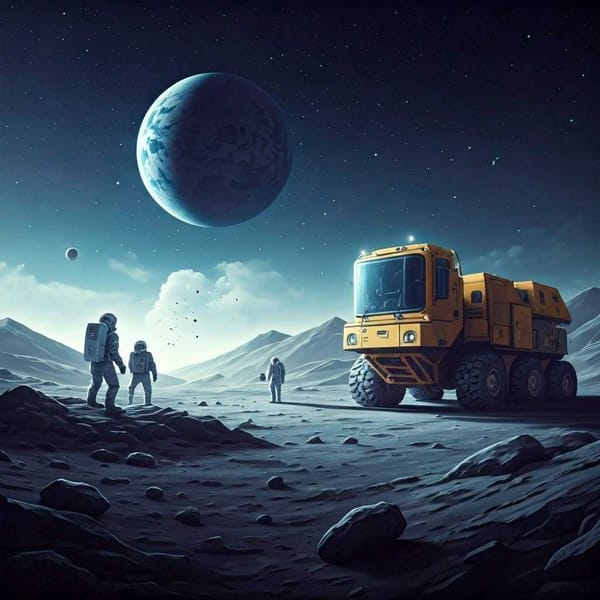Scientists Find Undersized Black Hole in Ancient Galaxy
Scientists spot a puzzling black hole in a young, distant galaxy. It's surprisingly small compared to its host galaxy, defying expectations of how galaxies and their central black holes grow.

The universe is a realm of the extraordinary, a cosmic stage where the rules aren't always as they seem. In the earliest eons after the Big Bang, a time when the cosmos was a seething stew of energy and nascent galaxies, the most enigmatic characters were already emerging – supermassive black holes. These behemoths, some with masses billions of times that of our Sun, have long puzzled astronomers. How did they bulk up so quickly, seemingly in defiance of the limited time they had to gorge themselves?
A recent discovery, led by an international team featuring Joel Sánchez Bermúdez from the Institute of Astronomy in Mexico, has shed some light on this celestial gluttony. They've revealed an ancient black hole with a mass 300 million times that of our Sun, lurking in a galaxy a mere 2.7 billion years after the universe's birth. While undoubtedly massive, what's so peculiar about this black hole is its size relative to its host galaxy.
You see, galaxies and their resident supermassive black holes usually have a special bond. Scientists have observed that the more massive the galaxy, the heavier its central black hole tends to be. It's a cosmic correlation, hinting that galaxies and their black holes evolve in tandem, perhaps feasting and growing in a synchronized movement.
But this early-universe black hole is throwing a spanner in the works. Despite living inside a monstrous galaxy (60 billion times more massive than our sun), the black hole itself seems strangely underweight. It's the cosmic equivalent of a lightweight boxer punching far above their weight class.
It's a bit like finding a fussy eater in a family of competitive food lovers, the usual pattern doesn't quite hold. This unexpected finding hints at a potential delay between a galaxy's growth spurt and that of its central black hole. Astronomers are now left scratching their heads and speculating about the reason for the black hole's apparent growth lag.
One compelling hypothesis hinges on the black hole having run out of fuel. For a black hole to get bigger, it needs a steady supply of gas and other cosmic goodies to devour. But what if something shut off the gas supply? Sánchez Bermúdez suggests that bursts of star formation could be the culprit. Supernovae explosions, the fiery finales of massive stars, might act like cosmic winds, blasting away the gas that would otherwise feed the hungry black hole.
To make this remarkable discovery, the scientists didn't rely on ordinary telescopes. They used a remarkable instrument called GRAVITY-VLTI. This infrared interferometer acts a bit like a cosmic detective, cunningly combining the light from four separate telescopes to achieve super-sharp resolution — ten times better than what each telescope could manage on its own.
The team's findings, published in the prestigious journal Nature, are just the beginning of a deeper mystery. They raise questions about whether other ancient black holes were also picky eaters, and if this delayed growth pattern was common in the early universe. Like any good cosmic tale, there's undoubtedly more to the story. As our telescopes grow bolder and more sophisticated, we might just uncover a whole new chapter on the turbulent, ravenous youth of supermassive black holes.
Black Hole Hunters and the Cosmic Yardstick
Remember those blurry, grainy photos of distant objects from the early days of cameras? Well, that's how it feels when astronomers peer at galaxies billions of light-years away. Details dissolve into hazy blobs, especially those pesky supermassive black holes. They gobble up matter with voracious appetites, but their gravitational grip is so strong, measuring them is like weighing a hyperactive puppy squirming on a cosmic scale.
Now, picture several brilliant scientists armed with a revolutionary tool called GRAVITY+. It's not some anti-gravity device, but a high-tech upgrade that harnesses the power of multiple telescopes working in unison. It's like giving your camera a giant zoom lens and a team of assistants to hold it steady.
And guess what these black hole hunters focused on? A distant, ancient quasar known as SDSS J092034.17+065718.0 – a cosmic cryptid almost as old as the universe itself. Quasars are like interstellar beacons, their supermassive black holes acting as engines that churn out insane amounts of light and energy. Catching a glimpse of one is like finding a dinosaur footprint in your backyard.
The problem with dinosaurs and supermassive black holes in distant galaxies is not just that they're far away, but they're also ancient. It's like trying to measure the height of your childhood self from faded photographs.
GRAVITY+ has a knack for cutting through the cosmic fog – consider it to be x-ray vision for black holes. Scientists use it to zoom in on the swirling maelstrom of gas and dust surrounding a black hole, measuring the speed at which it whips around the cosmic drain. The faster the swirl, the more massive the black hole – it's a bit like figuring out the size of a hurricane based on wind speed.
This is where the story gets really weird. The scientists weren't alone – they had some help from a new breed of AI programs. Students (yes, students!) of physics and engineering had a hand in teaching these AI programs to sift through the mountains of data that GRAVITY+ gathers. Imagine a troop of tech-savvy scouts helping an experienced tracker analyze the clues – it's teamwork on a grand scale.
And why all the fuss about international cooperation, you might ask? Turns out, pulling off cosmic measurements like this is a Herculean task. It's like building a giant LEGO set where the pieces are telescopes scattered across continents and the instructions come in multiple languages.

What's the Big Deal, Anyway?
Sure, black holes are inherently cool, but understanding them unlocks deeper mysteries. Unveiling the secrets of how they grew so monstrously large in the early universe tells us a bit about how galaxies themselves formed. You see, those cosmic cities of stars seem to have a cozy relationship with their central black holes, evolving in a complex interplay of mutual influence.
Think of it this way: finding new ways to measure these ancient cosmic giants is like inventing a super fancy yardstick. Sure, we know a whole lot, but with this new cosmic tool, astronomers can now measure farther and more precisely than ever before. It's a thrilling step into the unknown, a testament to human ingenuity and the power of collaboration.
“We gain an entire new perspective on the early days of the universe,” remarked one of the lead researchers. The future? Who knows, perhaps black hole measurements so routine you'll check a supermassive black hole mass forecast alongside the weather. Wouldn't that be something?




